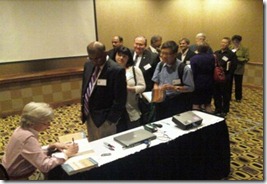I woke earlier than I wanted, and rolled over hoping for another few hours of sleep. It wasn’t going to happen, and I began to think about a thorny project that needed something new for forward movement. I got out of bed feeling tired, stuck, and annoyed.
I went to sleep the night before thinking about the issue, and asked my unconscious to work on fresh insights while I slept. That often works. Not today – and recognition of it was probably what woke me so completely in the early morning dark. I headed downstairs – and with an attitude – to feed the dog.
Instead, at the base of the stairs I impulsively grabbed boots, a coat long enough to cover my pajamas, and car keys. I leashed up the now-confused and still-sleepy old dog and headed to Corey Hill – the highest spot in the neighborhood – to watch the sun rise.
I expected solitude and a beautiful place to feel sorry for my tired and not-currently creative self. And then the surprises began.
I arrived at the small, hillside park in the urban core to find more than fifty runners in brightly-colored gear, depositing backpacks on the summit (probably containing dress clothes for subsequent jogs to work or school) and warmly greeting each other on a frigid winter morning. A few brought dogs and were letting them socialize in the off-leash park at the base of the hill. People were talking, laughing, digging out warmer hats or gloves for themselves or others, and stretching together. All-in-all it was a marvelous pre-dawn party.
As the sky turned a pinkish grey, the runners self-organized and small groups began to run together down the east side of the hill into the intensifying sunrise.
I walked to the center of the park and enjoyed the runners taking off into the emerging morning colors, the crescent moon still bright in the clear dawn sky, the gorgeous sun rising behind the tall Boston buildings in the distance, and the widening glow of pink that grew out of the sun sphere and surprisingly spread out and across the entire horizon surrounding me as if in a 360 degree hot pink embrace.
It was a big, spectacular sunrise. And it was made even more beautiful by happenings on the ground and reminders that we are never alone even in our darkest hours.
The world may seem cold, but it is always filled with warm communities of shared interest, the energy of accomplishment, new hills to navigate, the vitality of youth – many were runners in their 20’s and 30’s, love and friendship, and the ability of the human spirit to conquer the cold and dark with a smile, a buddy, and a stride forward. We just have to find what we need – and if we let ourselves, we may even find it by happenstance.
I found unexpected beauty on Corey Hill – but I was cold. I forgot gloves. So, I drove slowly down the hill, as the runners were heading back up, and stopped at a coffee shop. Alone in the shop with the barista, we talked. He told me about walking to work in the dark and how bright the stars and moon were – the clear skies probably why it was so darn cold. He had just moved into the neighborhood, as have I, from my former neighborhood – and we spoke about that. I told him about Corey Park, and he responded: “Oh, I’m stuck here in the mornings. Tell me all about the sunrise there.” And over my cappuccino with cinnamon and ricotta cheese cake, I passed along descriptions of the sunrise, the runners and dogs, and small surprises – and we were both fueled in new ways to better embrace our days.
Leadership is demanding business, and successful leaders have strategies to sustain vitality and resolve. They feed body and soul.
In a book that I co-authored[i], we propose strategies to nourish and strengthen leaders. One set of recommendations is to give deliberate attention to five key areas – we call them the 5 B’s:
1. Managing boundaries between self and others, between your life and your work
2. Attending to your body in ways that maintain basic good health
3. Bringing balance among work, friends and family, and leisure
4. Finding activities that feed the soul, like the beauty and recuperative power of the arts and nature
5. Increasing the odds that you’ll bounce back from stress and challenge through resilience training.
How can you bring more of the 5 B’s into your life? What greatness could you accomplish with a little extra clarity, strength, vigor, and bounce?
[i] Lee G. Bolman and Joan V. Gallos (2011). Reframing Academic Leadership. San Francisco: Jossey-Bass/Wiley, Chapters 8-13.
